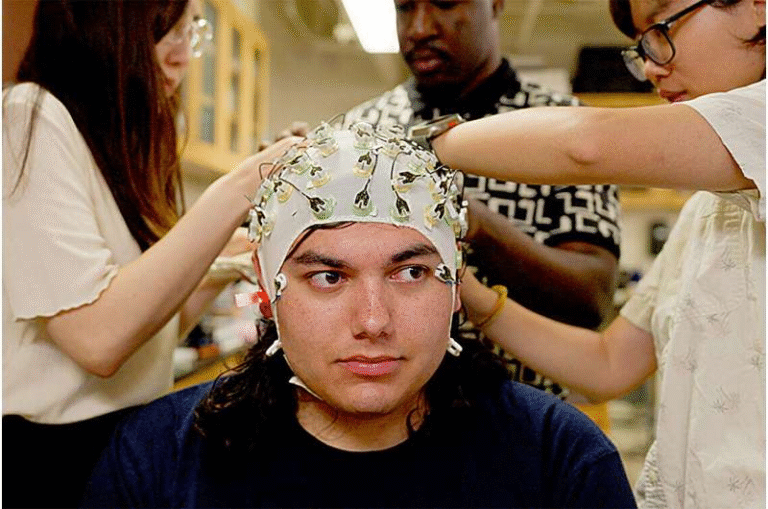Newly Discovered Brain Cells Help Us Handle Uncertainty
Researchers from UCLA have discovered a special group of brain cells that appear to be wired for uncertainty, offering fascinating insight into how our brains handle unpredictable situations. These newly identified neurons, located in the orbitofrontal cortex (OFC)—a part of the brain just above the eyes—become most active when the outcome of a decision isn’t clear. The finding could have important implications for understanding and treating conditions like anxiety, addiction, and PTSD, where people struggle to adapt to uncertainty.
How the Study Was Done
The study, published in Nature Communications on October 8, 2025, was led by Alicia Izquierdo, a professor of behavioral neuroscience at UCLA, along with Juan Luis Romero-Sosa, a doctoral researcher and first author of the paper. Their goal was to pinpoint how the brain encodes decision-making and learning when outcomes are unpredictable.
To investigate this, the researchers turned to Long–Evans rats, which share similar brain structures to humans in key areas involved in decision-making. They focused on two regions in the rats’ brains: the orbitofrontal cortex (OFC) and the secondary motor cortex (M2).
Using a calcium imaging technique, the scientists could literally see neurons in action. They injected a calcium-sensitive marker called GCaMP6f into the rats’ brains. This marker lights up when neurons fire, allowing the team to record brain activity through a tiny implanted lens and miniature camera as the rats performed decision-making tasks.
A Clever Learning Task
The rats were trained to complete a probabilistic reversal learning task using a touchscreen setup. On the screen, two targets appeared—one on the left and one on the right. The rats learned that touching one target would earn them a food reward. However, the reward probabilities kept changing.
At first, the “correct” choice almost always gave a reward (100% or 90% chance). Later, the conditions became trickier, with rewards coming only 70% of the time for the better option and 30% for the other. This gradual increase in uncertainty forced the rats to adapt their strategy constantly, mimicking the unpredictability we experience in real life.
Each session included multiple blocks of trials. After a certain number of correct choices, the rule flipped—what was previously the “good” option became the “bad” one. This reversal kept the rats learning actively rather than relying on a single repetitive strategy.
Shutting Down the Brain Cells
To understand the role of these brain areas more directly, the researchers used a chemogenetic technique called DREADD (Designer Receptors Exclusively Activated by Designer Drugs). This allowed them to temporarily turn off specific neurons in either the OFC or M2.
A modified virus was used to make neurons express synthetic receptors that could be “switched off” when the rats were given a harmless drug known as clozapine-N-oxide (CNO). When the rats performed the touchscreen tasks after receiving CNO, the scientists could observe what happened when certain brain regions were silenced.
What They Found
The results were striking:
- OFC neurons lit up under uncertainty.
When the reward outcomes were less predictable, activity in the orbitofrontal cortex increased dramatically. More neurons in this region became selective for choices, rewards, and outcomes. In contrast, the M2 region showed little change. - M2 favored certainty.
The secondary motor cortex showed strong, consistent activity during predictable tasks but didn’t respond much to uncertainty. It seemed tuned for precision and routine, rather than adaptability. - Learning suffered when OFC was shut down.
When the researchers inactivated the orbitofrontal cortex, the rats had trouble keeping track of which choice was more rewarding. Their ability to adjust strategies dropped, and their performance declined under uncertain conditions. - Behavioral flexibility decreased.
Normally, when the rats made a correct choice and got a reward, they would repeat that choice (“Win-Stay” strategy). When they didn’t get a reward, they tended to switch choices (“Lose-Shift” strategy). After OFC inactivation, these adaptive strategies weakened significantly. - Slower decision times.
The rats also took longer to make choices when their OFC was inhibited, suggesting that the brain region plays a role in evaluating uncertain outcomes quickly.
Why This Matters
The orbitofrontal cortex has long been known to play a role in emotion, taste, and reward processing, but this research adds a new layer: it’s also crucial for learning in unpredictable environments.
Humans share this same brain region, and it’s central to flexible thinking—our ability to adapt, change strategies, and update beliefs when the world surprises us. When this system doesn’t work well, we can become mentally “stuck.” This rigidity is seen in many psychiatric conditions, including anxiety disorders, post-traumatic stress disorder (PTSD), obsessive-compulsive disorder (OCD), and addiction.
Understanding how these neurons operate could eventually help design targeted therapies to restore flexibility in people who find it difficult to adapt to change or uncertainty.
The Push and Pull Between Precision and Flexibility
One of the most interesting ideas from this research is the balance between being precise and being adaptable. When the environment is predictable, precision helps—your brain can rely on consistent patterns. But when life gets uncertain, that same precision can become a liability, leading to rigid behavior.
The OFC appears to help maintain that balance. When things get unpredictable, it kicks into gear, engaging more neurons to evaluate probabilities and adjust choices accordingly. Meanwhile, the M2 region stays tuned for certainty and stable routines.
This distinction suggests that our brains may dynamically switch between different modes—stability vs. adaptability—depending on how uncertain the world feels.
Broader Insights on Uncertainty and the Brain
Uncertainty isn’t just a philosophical concept; it’s a biological challenge. Our brains constantly make predictions about what’s likely to happen next. The mismatch between what we expect and what actually happens is how we learn.
The fact that specialized neurons appear tuned for uncertain conditions shows just how deeply our biology is wired to handle the unexpected. It also explains why uncertainty can be stressful—our brains are working harder to interpret and adapt.
Research in humans using brain imaging has shown similar patterns: the orbitofrontal cortex and related regions light up when people face ambiguous choices, risky gambles, or unexpected outcomes. This UCLA study in rats helps confirm that the underlying neural architecture is evolutionarily conserved.
What Comes Next
The researchers believe that other animals—and humans—likely share these uncertainty-tuned neurons. Future studies may test this idea using non-invasive brain imaging in people or explore how these circuits behave in psychiatric conditions where flexibility is impaired.
While we’re still far from clinical applications, understanding how the brain encodes uncertainty could help us develop better approaches for disorders that involve overcontrol, rumination, or fear of change.
As Izquierdo’s team points out, our brains evolved in uncertain environments, where balancing expertise and flexibility was essential for survival. The ability to adapt—to learn when things don’t go as expected—may be one of the brain’s most vital skills.






